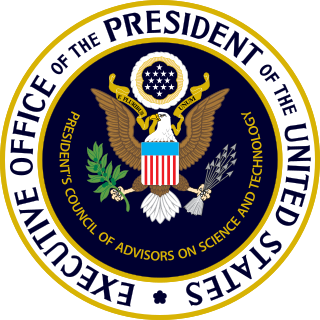
Cultivation theory is a sociological and communications framework designed to unravel the enduring impacts of media consumption, with a primary focus on television. At its core, the theory posits a compelling hypothesis: individuals who invest more time in watching television are prone to perceive the real world through a lens aligning with the prevalent depictions in television messages, in contrast to their counterparts with lower television viewership but comparable demographic profiles.
David Louis Goodstein was an American physicist and educator. From 1988 to 2007 he served as Vice-provost of the California Institute of Technology (Caltech), where he was also a professor of physics and applied physics, as well as the Frank J. Gilloon Distinguished Teaching and Service Professor.

King Mongkut's Institute of Technology Ladkrabang is a research and educational institution in Thailand. It is situated in Lat Krabang District, Bangkok approximately 30 km east of the city center. The university consists of nine faculties: engineering, architecture, science, industrial education and technology, agricultural technology, information technology, food industry, liberal arts, and medicine.

The CSI effect describes the various ways in which the exaggerated portrayal of forensic science on crime television shows such as CSI: Crime Scene Investigation influences public perception. The term was first reported in a 2004 USA Today article describing the effect being made on trial jurors by television programs featuring forensic science.

George Gerbner was a professor of communication and the founder of cultivation theory. He taught at Temple University, Villanova University, and the University of Pennsylvania.

James Kakalios is a physics professor at the University of Minnesota. Known within the scientific community for his work with amorphous semiconductors, granular materials, and 1/f noise, he is known to the general public as the author of the book The Physics of Superheroes, which considers comic book superheroes from the standpoint of fundamental physics.

The Annenberg School for Communication is the communication school at the University of Pennsylvania. The school was established in 1958 by Wharton School alum Walter Annenberg as the Annenberg School of Communications. The name was changed to its current title in 1990.

The President's Council of Advisors on Science and Technology (PCAST) is a council, chartered in each administration with a broad mandate to advise the president of the United States on science and technology. The current PCAST was established by Executive Order 13226 on September 30, 2001, by George W. Bush, was re-chartered by Barack Obama's April 21, 2010, Executive Order 13539, by Donald Trump's October 22, 2019, Executive Order 13895, and by Joe Biden's February 1, 2021, Executive Order 14007.

Piara Singh Gill was an Indian nuclear physicist and a pioneer in cosmic ray nuclear physics. He was the first Director of Central Scientific Instruments Organisation (CSIO) of India. He was research fellow of University of Chicago (1940). He was research Professorship fellow of Tata Institute of Fundamental Research (TIFR) (1947), Officer-on-Special Duty (OSD) with the Atomic Energy Commission in New Delhi. Professor and head of the Department of Physics at Aligarh University (1949), Director of Central Scientific Instruments Organization (CSIO) (1959) and Professor Emeritus at Punjab Agricultural University (1971).

Dodge College of Film and Media Arts is one of 10 schools constituting Chapman University, located in Orange, California, 40 miles (64 km) south of Los Angeles. The school offers undergraduate and graduate degrees, with programs in film production, screenwriting, creative producing, news, documentary, public relations, advertising, digital arts, film studies, television writing, producing, and screen acting.

Jennifer Ouellette is a science writer and editor, based in Philadelphia, Pennsylvania, and Los Angeles, California.
Physics outreach encompasses facets of science outreach and physics education, and a variety of activities by schools, research institutes, universities, clubs and institutions such as science museums aimed at broadening the audience for and awareness and understanding of physics. While the general public may sometimes be the focus of such activities, physics outreach often centers on developing and providing resources and making presentations to students, educators in other disciplines, and in some cases researchers within different areas of physics.

Kasturi Lal Chopra was an Indian materials physicist and a former director of the Indian Institute of Technology, Kharagpur. He was the founder of the Thin Film Laboratory at Indian Institute of Technology, Delhi and the Microscience Laboratory at IIT, Kharagpur and held several US and Indian patents for his research findings. Author of a number of books on thin film technology, he was a recipient of Shanti Swarup Bhatnagar Prize, the highest Indian award in the science and technology categories. The Government of India awarded him the fourth highest civilian honour of the Padma Shri, in 2008, for his contributions to science and engineering.

David Allen Kirby is an American professor of science communication studies at Cal Poly University in San Luis Obispo. He researches, writes about, and teaches science communication and the history of science. He is best known for his work showing how fictional narratives can be used in the process of design and for his studies on the use of scientists as consultants for Hollywood film productions.

The University College of Science, Technology and Agriculture are two of five main campuses of the University of Calcutta (CU). The college served as the cradle of Indian sciences by winning the Nobel Prize in Physics in 1930 and many fellowships of the Royal Society London.













